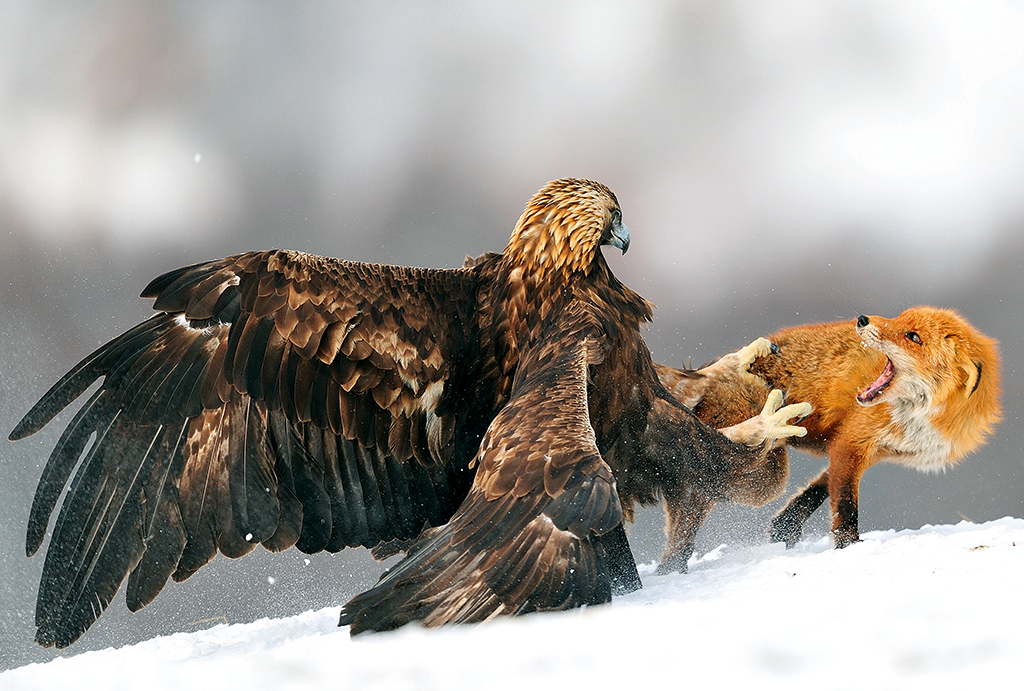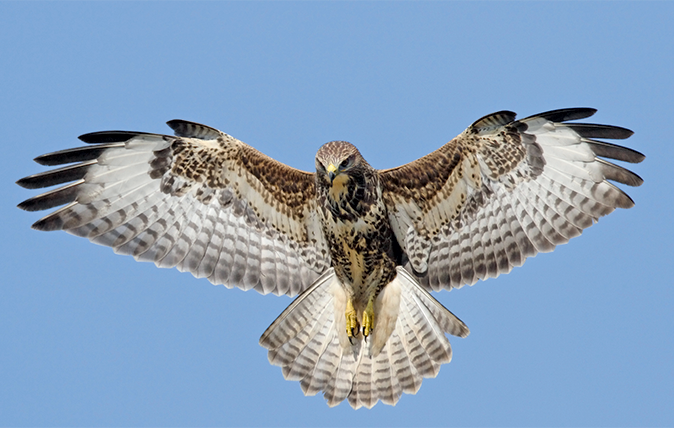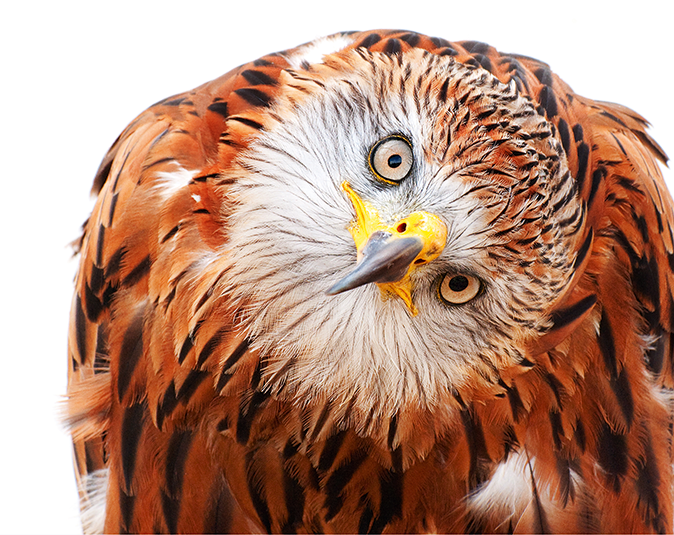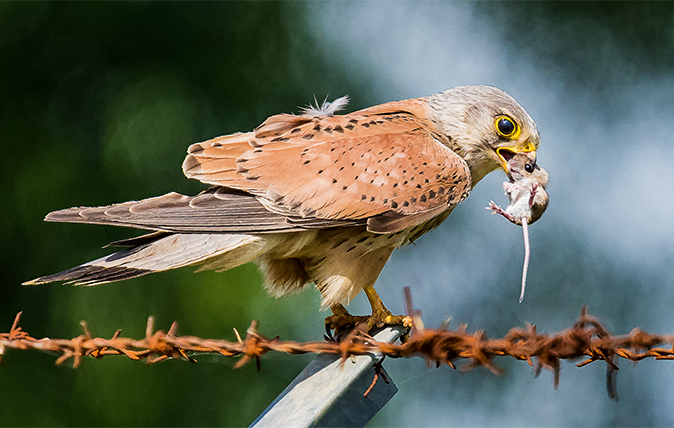Britain’s birds of prey: The Country Life guide to all of the UK’s raptors
Raptors’ supersonic vision, effortless aerial acrobatics and ruthless hunting instinct make them the undisputed masters of the skies, but can you tell a merlin from a hobby or a goshawk from a sparrowhawk? Simon Lester explains the basics of these fascinating creatures and then gives a rundown of all 15 of Britain's raptor species.

Powerful talons to hold and kill prey and a hooked bill to tear flesh from their victims’ bones. Piercing binocular vision, many times stronger than our own, makes for an intimidating death stare and devastatingly effective hunting technique (it’s thought raptors can identify the urine trails of small mammals from far overhead). And of course those brilliantly graceful flying skills, thanks to powerful wings and a designer tail, and the ability to use thermals, the wind, the lay of the land and stealth to survive.
Raptors really are devastating, hugely impressive predators.
Their numbers dipped alarmingly in the 1970s, but a variety of measures have changed that: the banning of DDT, which softened eggshells dangerously; a change in attitudes; protective legislation and reintroductions; and the tireless work of passionate volunteers.
The end result is that all our raptor populations are growing in both number and range, and most are healthy – particularly the buzzard and red kite, which have been hugely successful.
- There are 15 species of diurnal, breeding raptor resident in these isles, split into three basic groups: eagles (the largest), hawks (the next largest, with broad wings) and falcons, which have curved wings and a tooth on their upper mandible to deliver the ultimate coup de grâce.
- All raptors essentially eat flesh, but there are specialists such as the osprey with its taste for fish, and the honey buzzard, which depends on bees and wasps. Others rely on live prey such as the vole, a creature whose numbers regularly peak and crash in a population rollercoaster that will correlate directly to the numbers of those raptors that, unlike the unfussy common buzzard, can’t switch diet. Larger raptors are also more likely to scavenge.
- The raptor’s efficient digestive tract includes a crop in which to store enough food to sustain them until the next feed and a bone-dissolving stomach. Even after an avian carcass has been plucked, some feathers, fluff and bone will be ingested. More indigestible material is produced when devouring fur-bearing creatures, sometimes in one gulp; this is sorted out in the gizzard, then regurgitated, or cast, as a pellet.
- Females are always bigger than their mates and they definitely wear the trousers – the cock will feed her and the young until she starts hunting, when her larger size enables her to catch bigger prey. In contrast to other birds, raptor broods hatch in intervals so that, if there’s a food shortage, it’s the eldest, largest chick that survives, ensuring some productivity.
Golden eagle (Aquila chrysaetos)
500 UK breeding pairs, status green
This iconic bird stands for a centuries-old image of power thanks to its bold features, physical strength and 7ft wingspan fingers. Some mistake buzzards for golden eagles, but, believe me, when you see an eagle (in the Scottish Highlands), you know it’s an eagle.

They’re impressively agile for a large bird, capable of stooping at prey at up to 120mph, a turn of speed that assists with mating acrobatics, when they take it in turns to drop and catch sticks and stones in mid-air. They’re long lived (up to 30 years) and mate for life once they reach sexual maturity at about four years old.
Exquisite houses, the beauty of Nature, and how to get the most from your life, straight to your inbox.
Sea eagle or white-tailed eagle (Haliaeetus albicilla)
106 pairs, conservation status red (UK), green (Europe and global)
The sea eagle – often dubbed a flying barn door – is our largest bird of prey, with an 8ft wingspan, finger-like feathers on the wing and distinctive tail tips that are only white when adult. Mating displays, which start in March, involve locking talons and cartwheeling through the air.
https://youtu.be/ejRUUbNciOo?t=1m50s
Their reintroduction to Scotland’s west coast, most notably Mull, in the 1970s after an absence of 70 years, is a conservation success story, even if sheep farmers are less enthused, and has been a shot in the arm to the tourist industry.
Osprey (Pandion haliaetus)
200–250 pairs, status amber (UK), green (Europe and global)
This is one of Nature’s most impressive sights when it flies high above water, its bright, white body suspended between dappled wings that stretch to nearly 6ft. The stoop is even more spectacular, as it crashes into the water talon first and re-emerges with a feather-drying shake and a wriggling fish skewered and suspended head first from its specialist feet.
It’s now possible to see the summer visitor in England and Wales, but their stronghold is in Scotland, where they returned as a breeding bird in the mid 1950s. Less wary of humans than many other species, ospreys pair for life, returning to the same sizable eyrie each year.
Buzzard (Buteo buteo)
79,000 pairs, status green
Buzzards have enjoyed a remarkable comeback and now soar on thermals in every county, often with a cat-like mewing. This medium-sized hawk has a wingspan of up to 4ft 6in and varies in colour from almost white to dark brown. Part of its success is being a generalist: it scavenges and preys on anything from rabbits to worms. Once paired, buzzards are highly territorial – woe betide any interloper.

Unfairly labelled lazy – due to their habit of sitting in wait on a perch, ready to flop down on their prey – they’re quick movers, adept at hovering and flying fast and low to surprise prey, as well as the rollercoaster antics designed to impress the ladies.
Honey buzzard (Pernis apivorus)
70 pairs, status amber (UK) and green (Europe, global)
Bee hawk would perhaps be a better name for this highly specialised raptor, as it doesn’t actually eat honey, but will follow a wasp or bee back to its nest, dig out the comb and feast on the grubs. It’s easy to miss this rare, secretive summer visitor, of a similar size to the common buzzard, as it floats over its haunt of extensive mixed woodland. At a distance, the small pigeon-like head is the best identification clue.
The male is very attentive, sharing nest building and incubation, the whole process compressed to make good use of the time in which their food source is available.
Red kite (Milvus milvus)
1,800 pairs, status green (UK), near threatened (Europe, global)
The now familiar red kite isn’t shy; in ancient times, it thrived by living and scavenging alongside man in towns. Thanks to reintroductions, which begun in 1989, in England and Scotland and the nurturing of a remnant population in Wales, these magnificent birds – with russet plumage, a 5ft 6in wingspan and a long, forked tail – can be seen circling throughout the country.

Red kites principally rely on carrion, but will also take small birds and mammals, even lambs, worms and insects and are notorious for cheekily stealing objects such as underwear from washing lines for nest building.
Marsh harrier (Circus aeruginosus)
400 pairs, status amber (UK), least concern (Europe, global)
The cock and hen look quite different – the larger hen is dark brown with a gold crown and the cock is quite the dandy of the raptor world. They were once thought to frequent only marshland and reed beds, but are just as likely to be seen hunting and nesting in arable crops. All harriers roost communally and eat other birds’ eggs.

Hen harrier (Circus cyaneus)
646 pairs, status red (UK), near threatened (Europe), least concern (global)
Sometimes described as ‘the ghost’, the pale-grey hen harrier male drifts over moorland with slow flaps of his long black-tipped wings, which form a recognisable V shape. The dark-brown female hugs the ground, the long tail steering her over every contour, only the flash of her white rump giving her away.
Controversy surrounds its penchant for grouse – hours of political debate and thousands of pounds have been spent on it – but it’s also one of the most spectacular at sky-dancing antics and food passes during the mating season. Like all ground-nesting birds, it’s vulnerable to fox predation.
Montagu’s harrier (Circus Pygargus)
15 pairs, status amber (UK), least concern (Europe, global)
The smallest and rarest harrier, named after the naturalist George Montagu, it’s confined to the south of England when it returns from Africa to breed, often in arable crops.
https://youtu.be/UMeda6K-564?t=5m1s
Similar in colouring to the hen harrier, Montagu’s are slimmer in frame and the cock has a black wing bar. It hunts much the same prey as other harriers, ambushing mammals and birds on, or near, the ground with lightning speed and agility.
Goshawk (Accipiter gentilis)
400 pairs, status green (UK), least concern (Europe, global)
The battleship-grey goshawk, with its intimidating stare, powerful short wings and strong yellow legs and feet, is the hard man of the raptor dynasty. Nothing – from a blue tit to a full-grown hare – is sacred. It’s favoured by falconers, who were the driving factor for their return as a breeding bird in the UK.

A woodland specialist, the goshawk builds large nests high in trees, around which plucking posts reveal the identity of victims. Their flight is a distinctive series of quick flaps followed by a short glide.
Sparrowhawk (Accipiter nisus)
35,000 pairs, status green (UK) least concern (Europe, global)
The smallest hawk: the hen resembles the goshawk, but the blue-backed cock is tiny by comparison. Both have distinct barring on the chest, the cocks being adorned with a rusty red. It frequents woodland and terrorises garden birds, recording up to 120 species in its diet. The mating ritual is relatively noisy, as are the calls of as many as six hungry nestlings.

Peregrine falcon (Falco peregrinus)
1,500 pairs, status green (UK), least concern (Europe, global)
The fastest animal on the planet, our largest falcon is built for speed, with curved wings of more than 3ft and a stocky, slate-backed body. It can reach more than 200mph before stooping, wings folded, from hundreds of feet above its unsuspecting prey, battering it from the sky.

It’s made a remarkable comeback from the 1960s when it fell victim to chemical poisoning, egg-collecting, falconers taking young and persecution. This was particularly acute during the World Wars, when they were shot to stop them killing carrier pigeons.
Now, they range throughout the UK from regular upland, craggy haunts to cities where their cliffs are buildings and their food is feral pigeon.
Kestrel (Falco tinnunculus)
45,000 pairs, status amber (UK) and least concern (Europe and global)
Once our most common raptor, the kestrel is in decline, particularly in Scotland, where there are fears of usurpation by buzzards. The chestnut-bodied falcon is also known as a ‘wind hover’ because of how it hangs in the air, the cock’s grey head motionless as the wings and tail work in unison to give it a lofty vantage point, poised to drop like a stone onto a scuttling vole.
They like to refurbish old crow’s nests and make use of holes in trees and manmade structures to rear their young.

Hobby (Falco subbuteo)
2,800 pairs, status green (UK), least concern (Europe and global)
Looks like a small peregrine with red trousers and possesses the same agility and grace when plucking a dragonfly from the air or catching a swallow, as they hunt insects over water.

Their range and numbers are increasing, probably due to climate change. They will nest in an old crow’s nest in a preferred conifer and, after breeding, return to Africa.
Merlin (Falco columbarius)
1,500 pairs, status red (UK), least concern (Europe, global)
What our smallest raptor lacks in size, it makes up for with pluck – they will intimidate ravens, buzzards and all-comers with an incessant, chittering attack.

Like other raptors, they follow their prey, tracking the return to moorland in spring of pipits and larks (historically, the kestrel was women’s preferred falcon for lark-hunting expeditions) and they pluck their prey away from the nest – often on nearby rocks and posts – but the build-up of detritus soon smells, making this ground-nester particularly vulnerable to fox predation.
This article by Simon Lester first appeared in Country Life in 2017. All figures were accurate at the time, sourced from the BTO and RSPB.

